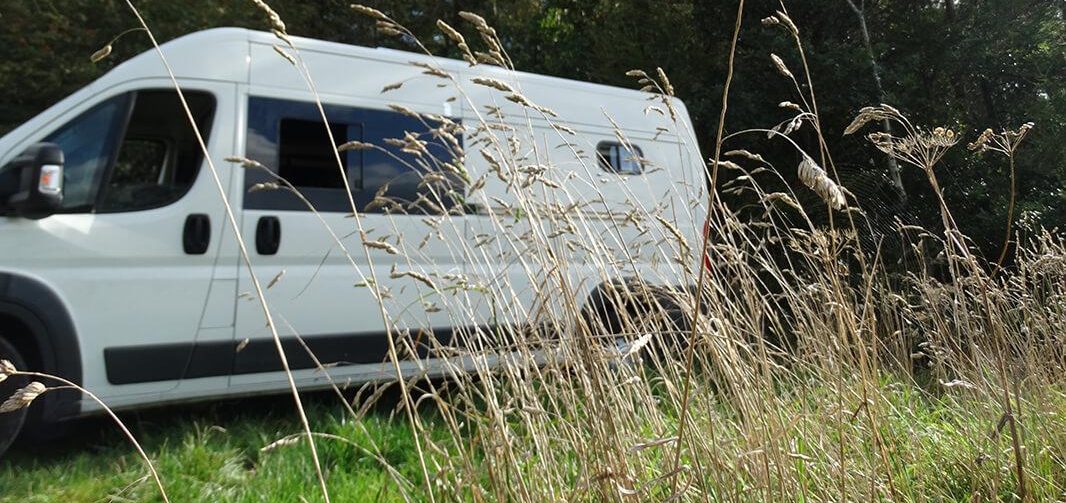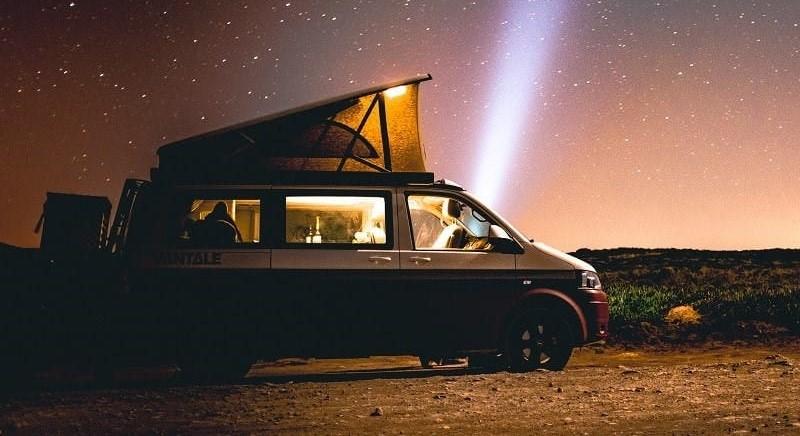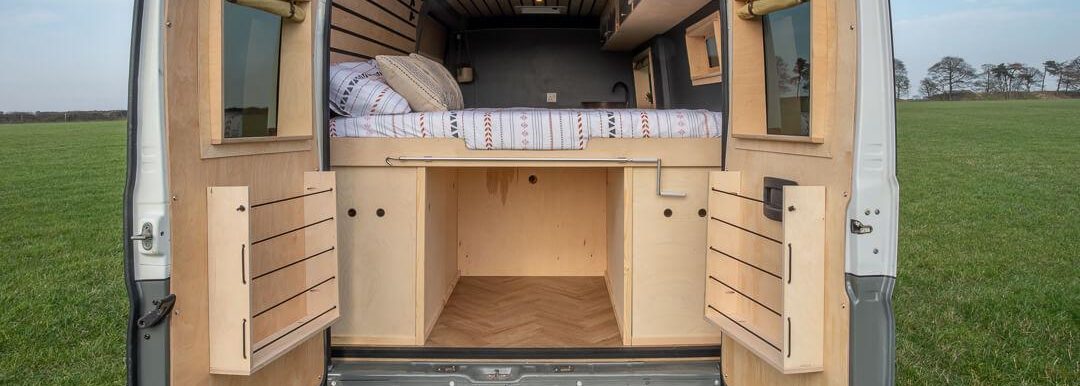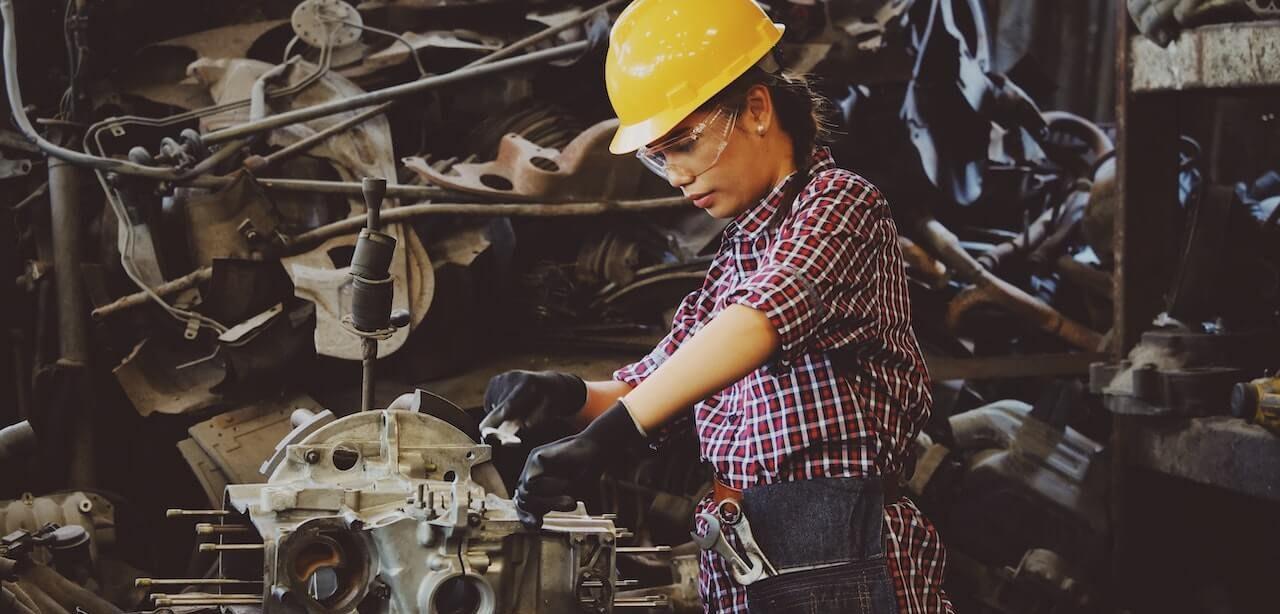Van conversions are becoming more popular in the UK. As people seek to live alternative lifestyles, look for fun ways to travel or want to show off their superior DIY skills to other conversion fanatics.
Converting a van isn’t an easy task for most people, so you have to know your stuff when it comes to making a van road legal, even if you don’t perform the conversion yourself.
It is always good to know what questions to ask a converter. That way, you can get an idea if they know how to build a road-legal van. Here is our guide to the DVLA requirements for van conversions.
Is converting a van to a camper van legal?

The short answer here is yes. Nothing is stopping you from converting a van into a camper van in UK law. However, there are specific internal and external criteria that your van must meet if you intend to have it recognised as a motor caravan (home) by the DVLA.
What is the DVLA, and why is it important?
The Driver and Vehicle Licensing Agency (DVLA) has to record vehicle details for road safety and enforcement. The DVLA needs a clear external description of the vehicle to identify and pass on information to the police or other enforcement boards.
Check your VC5 Registration Certificate (logbook)
The DVLA will only consider changing your vehicle to a motor caravan (home) if the following body types are on your VC5 Registration Certificate (section D.5):
- Ambulance
- Box van
- Goods
- Insulated van
- Light goods
- Light van
- Livestock carrier
- Luton van
- Minibus
- MPV (multi-purpose vehicle)
- Panel van
- Specially fitted van
- Special mobile unit
- Van with side windows
Do I need to change the body type?

Body type is only used to characterise the vehicle’s appearance in traffic. There are no insurance, legislative or speed limit requirements. With that in mind, if the van satisfies all the internal specifications for a motor home, you won’t need to apply to change the body type.
However, if you do wish to change the body type of your vehicle, the DVLA must be satisfied it meets all the external criteria for a motor home. In short, your vehicle’s body type will not be changed unless the exterior looks like a motor caravan in traffic.
Requirements for changing vehicle body type to motor caravan
The DVLA will only consider changing your vehicle body type to a motor caravan (home) if it meets the following criteria:
1. The body type shown in your VC5 logbook is one of the above
2. Your motor caravan meets all the exterior permanent features criteria
3. Your motor caravan meets all the interior features criteria
If the body type in the form isn’t the one listed above, the DVLA won’t process your application. If you intend on changing the body type, always check the body type on the VC5 logbook before you buy the vehicle, and if you don’t feel confident, your converter may be able to source a vehicle for you.
What are a motor caravan’s permanent external features criteria?
Here is a list of the criteria the DVLA uses to describe the external features of a motor caravan, which is what they will use to consider your application:
- Two or more windows on at least one side of the main body (this does not include windows on the driver or passenger doors) to provide a reasonable amount of daylight into the living accommodation
- A separate door provides access to the living accommodation of the vehicle (this excludes the driver and passenger doors); a window on this door counts as a separate window on the main body
- Motor caravan-style graphics on both sides of the vehicle
- An awning bar attached to either side of the vehicle
- A high-top roof (this does not include a pop-top elevating roof)
The DVLA will also require photographic evidence of the completed conversion.
What are a motor caravan’s internal features criteria?

A motor caravan is a special M-category vehicle which is constructed with basic living equipment and is split into four categories. The vehicle must meet the criteria in all four categories
1. Seats and a table
2. Sleeping accommodation, which may be converted from the seats
3. Cooking facilities
4. Storage facilities
All equipment must be fixed except the table, which can be designed to be removed easily.
Category 1: Seats and table
The vehicle must meet the following criteria:
- They shall be an integral part of the vehicle living accommodation area, mounted independently of other items
- A table mounting arrangement shall be secured as a permanent feature, although the table top may be detachable
- Permanent secure seating must be fixed to the floor or sidewall and available for use at the table
Category 2: Sleeping accommodation
The sleeping accommodation:
- Shall be an integral part of the vehicle living accommodation area
- Can be either beds or beds converted from seats
- Must be secured as a permanent feature, either with the base structure of the vehicle floor or to the side wall, unless the sleeping accommodation is provided over the driver’s cab compartment
Category 3: Cooking facilities
Your conversion must have a minimum of a single-ring cooking facility or microwave, which shall be secured directly to the vehicle floor or side wall as a permanent feature.
If an on-board gas supply fuels the cooking facility:
- The fuel reservoir must be secured in a storage cupboard, or the reservoir must be secured to the vehicle structure
If the cooking facility is fuelled by gas with a remote fuel supply:
- The fuel supply pipe must be permanently secured to the vehicle structure
Category 4: Storage facilities

The storage facilities:
- Can be a cupboard or locker
- Form an integral part of the vehicle living accommodation, mounted independently of other items, unless incorporated below the seat, sleeping accommodation or cooker
- Must be secured permanently to the vehicle floor or side wall except when the storage facility is over the driver’s cab compartment
While it isn’t necessary to submit a motor home conversion application if only making internal changes, it makes sense to follow the criteria set out by the DVLA.
It’s also worth speaking with The Vehicle and Driving Standards Agency and insurance companies to ensure your van is roadworthy and covered for any accidents.
There could also be benefits of registering your van as a leisure vehicle, such as reduced MOT and insurance costs.
How to keep your campervan safe
Do I need to fill out a motor caravan conversion application?
If you only plan on making internal changes to the van, don’t apply to reclassify the van as a motorhome. However, you should follow the DVLA guidelines for the internal features of a motorhome and speak to the appropriate bodies to ensure your van is safe and legal.
It may be worth sending an application to ensure all bases are covered. If you plan on making internal and external changes, consider you may have to apply to have your van reclassified as a motor home. Again, speak to appropriate bodies and professionals who can advise you on the best steps.
How to register a campervan conversion with the DVLA
If you need to apply to have your vehicle reclassified as a motor caravan, here’s how to get started. Collect the following evidence to support your application:
- A completed motor caravan conversion checklist
- A VC5 showing one of the applicable body types
- Interior photos of each one of the required features with the bed and table in the use position (see ‘Motorcaravan internal features’ below); the photographs must show that there are two or more windows providing daylight into the primary living accommodation on at least one side of the main body
- Exterior photos from the front, both sides and rear with the registration plates visible
- A photo showing the vehicle identification number (VIN) or the chassis number stamped on the plate attached to the original chassis or vehicle bodyshell
Write the date, vehicle registration number and description of what is in the photograph on the back, and if you want the photos returned make sure you request it in your application.
If you have the new VC5 with multi-coloured blocks on the front, fill out section 1. If you have the old-style VC5, fill out section 7.
You can then send your VC5 application and evidence to the DVLA, who will determine the body type based on how the vehicle looks in traffic. If the van needs a DVLA inspection, the costs of the inspection will be covered, but the cost of transportation to the inspection won’t be covered.
How to ensure your van fits the criteria
The DVLA guidance isn’t easy to interpret. In November 2022, they were advised to compensate customers and change their criteria after two of their applicants were rejected several times. However, don’t let this put you off converting a van. As long as you get the right advice, you’ll be able to get a roadworthy campervan. If you lack the skills to do it by yourself, consider the following:
Option 1: Use a professional

The easiest way to ensure your van meets the DVLA criteria is to use a professional converter with previous conversions. Even better if they have an example of the vehicle you intend to use.
A converter will have knowledge of all the requirements you need to make your van fit for purpose and can guide and advise you throughout the conversion process.
Option 2: Use the Vehicle Standards Team
If you’re a DIY converter or plan on doing bits of the conversion yourself, you can check in with the Vehicle Standards Team throughout your build if you have any queries. You can reach them in the following ways:
International Vehicle Standards
Department for Transport
Zone 1/34, Great Minster House
33 Horseferry Road, London, SW1P 4DR
Or email them: ivs.enquiries@dft.gov.uk
Need more advice? Contact us today!
Bhode Vans has been converting vans since 2019, so we know a thing or two about roadworthy vans. Submit an enquiry today, and we can discuss how to get your dream van on the road without complications.

